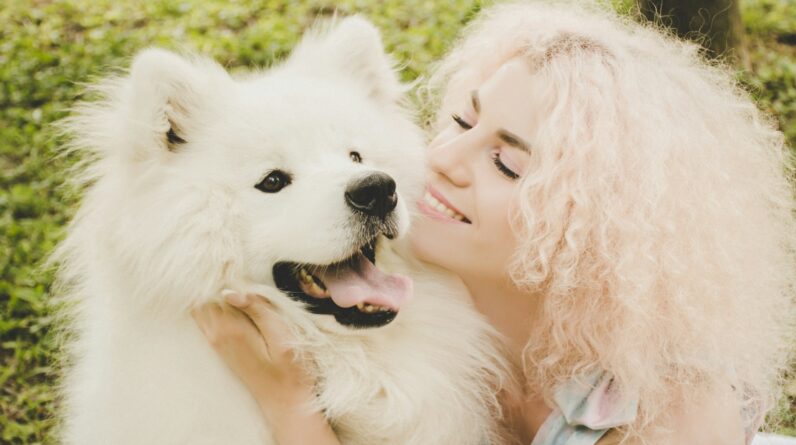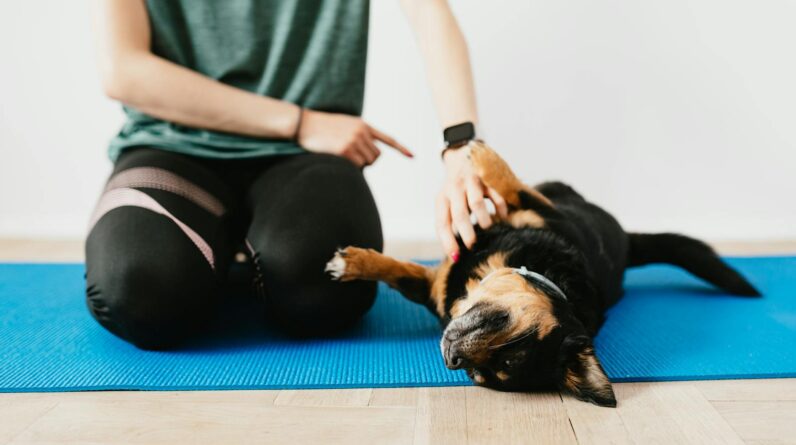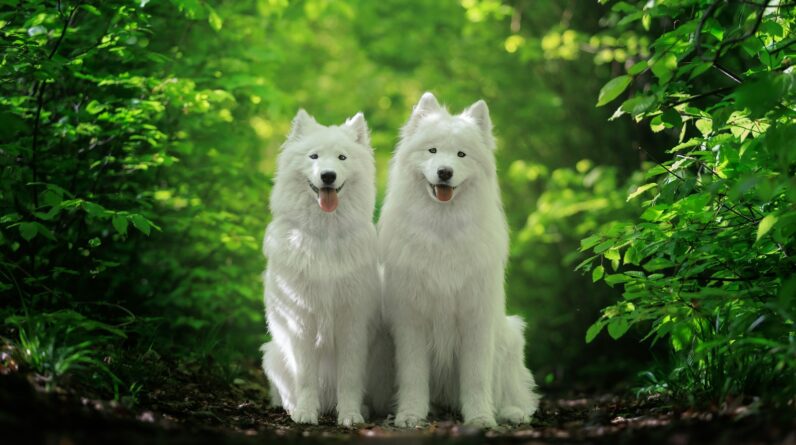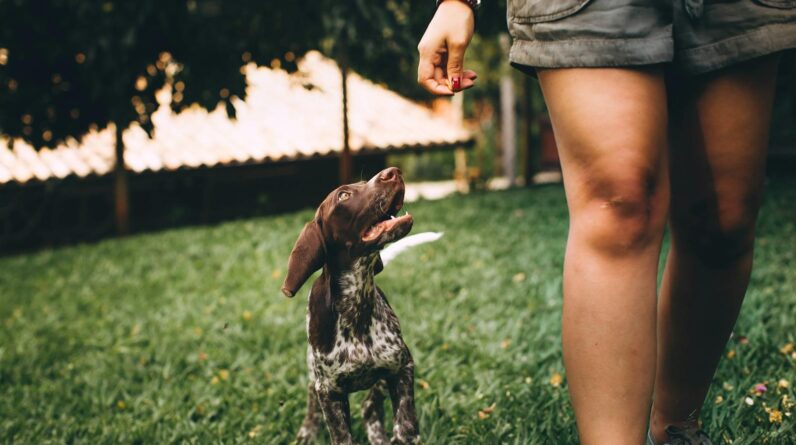
Help Your Older Dog Make Friends
Hey there, pal! So, you’ve got an older dog at home and you want to teach them how to hang out with other dogs and people, right? It’s like when you go to a new school and need to make friends. It can be tough, but don’t worry. I’m here to help you help your furry buddy.
Start Slow and Keep It Chill
First things first, take it slow. Older dogs are like grandpas; they like things a bit more relaxed. You don’t have to throw a huge party for them to make friends. Start by just going on walks in places where other people and dogs like to hang out. Keep your dog on a leash and let them watch and sniff around. It’s like people-watching, but for dogs.
Practice Makes Perfect
Remember, good things take time. Let your dog meet the same friendly dogs over and over. They’ll start to feel like they’re in their own cool club. Make sure these doggy pals are chill and don’t want to play too rough. It’s like picking the right buddies to sit with at lunch.
Meeting New Two-Legged Friends
Now, let’s talk about people. Dogs need to know how to be cool with humans too. Start with your friends and family. Invite them over to your house. Tell them to be super calm and not to rush to pet your dog. They should wait for your dog to come to them. It’s like when you’re meeting a new person; you don’t want them to get all up in your face before you even know their name.
Quick Tips for Doggy Dates
When your dog seems ready, you can set up playdates. This just means letting your dog hang out with one other dog at a time. Here are some tips:
- Make sure both dogs have had a chance to walk around and chill before they meet.
- Have the playdate in a quiet place with no loud noises and not too many things going on.
- Keep the first few playdates short. It’s like when you’re playing a new game and want to start with just a few turns at a time.
Learning New Things Together
Dogs can learn new tricks, even old dogs! Teach your dog some fun new games or tricks. This can help them feel more confident when they meet new friends. It’s like learning to jump rope or ride a bike – once you’ve got it, you feel super good about yourself.
What If Your Dog Gets Scared?
Sometimes dogs get scared, and that’s okay. If your older dog seems nervous or doesn’t want to be around others, give them space. Back off and try again another day. Imagine if you were scared of spiders and someone kept putting spiders in your room. You’d want a break, right? Same goes for your dog.
Be the Leader of the Pack
Lastly, you’ve gotta be the leader. You need to stay calm, cool, and collected so your dog knows they can trust you. If they see you’re okay with the new people or dogs, they’ll start to think it’s all good too. It’s like when your mom or dad hold your hand on the first day of school. It makes you feel safe, right? That’s what you need to do for your dog.
Time for Yummy Treats
Don’t forget about treats! When your dog does something good, like being friendly with a new pal, give them a little treat. They’ll start to connect meeting friends with getting yummy stuff. Who doesn’t like a little reward for being brave?
One Last Thing
Remember, every dog is different. Your dog may take a little time to get used to others. But if you’re patient and keep at it, you’ll help them have a happier, friend-filled life. Just think of how awesome you’ll feel when you see your dog having a good time with their new buddies. Good luck! 👍
Is it too late to socialize my older dog?
Not at all! While it’s easier to socialize dogs when they’re young, older dogs can learn new tricks, including social skills. It might take patience and gradual exposure, but older dogs can enjoy interactions with others too.
Start with short, positive experiences and slowly increase their social interactions. Treats and praise go a long way in making these new experiences more enjoyable and less stressful for your furry friend.
How can I socialize my older dog with other dogs?
Begin with controlled situations, like one-on-one playdates with a calm dog. Choose a neutral space for them to meet, like a quiet park, where neither dog feels territorial. Watch their body language and intervene if necessary.
Keep initial interactions short and sweet. Gradually increase the time as your dog becomes more comfortable. Always reward good behavior with treats or affection to reinforce positive encounters.
What if my older dog is scared of new people?
It’s common for older dogs to be wary of strangers. Introduce new people in a calm environment, letting your dog approach them in their own time. Have guests ignore the dog at first to reduce pressure.
Encourage friends to offer treats or their favorite toy. This can create a positive association. Remember to praise your dog for their bravery when they make small steps toward socialization.
Can older dogs get stressed out by too much socializing?
Yes, just like people, dogs can get overwhelmed. Pay attention to signs of stress like excessive panting, avoidance, or hiding. These are signals your dog needs a break.
Balance social activities with plenty of downtime. It’s okay to take baby steps. Over time, you’ll find the right amount of socializing that works for your dog without causing stress.
What are some socializing activities suitable for older dogs?
Look for low-impact activities that don’t require lots of energy. Short walks in a new environment, gentle playdates, or visiting pet-friendly stores can be good options. These outings provide mental stimulation without being too physically demanding.
Consider enrolling in a training class designed for older dogs. These classes cater to their pace and provide socialization in a structured environment. It’s also a fun way to bond with your dog and meet other pet owners.
Key Takeaways
- Socializing older dogs requires patience — take it slow and let your dog set the pace. Rushing can backfire, so watch your dog’s comfort levels.
- Positive reinforcement is key. Reward good behavior with treats and praise to build a positive association with new experiences and friends.
- Create a safe environment for introductions. Use neutral territory for new interactions to prevent territorial behavior from your older dog.
- Use a leash during early social encounters to maintain control and ensure safety for all animals and people involved.
- Pay close attention to body language. Dogs communicate discomfort or stress through their posture, tail position, and noises. Back off if your dog seems overwhelmed.
- Gradually increase exposure. Start with short sessions and slowly introduce more stimuli as your dog becomes more comfortable.
- Consider professional help if needed. Dog trainers or behaviorists can provide specialized guidance tailored to your older dog’s needs.
- Keep each new social experience positive, so your dog learns that meeting new people and pets is enjoyable, not scary or threatening.
- Remember that socializing an older dog may require reconditioning. Addressing past traumas or fears might be necessary for a successful socialization process.
- Health check-ups are essential; ensure your older dog is physically comfortable and healthy before starting a socialization program to rule out medical issues that could affect their behavior.
- Be mindful that every dog is an individual. Your older dog’s personality and past experiences will heavily influence their socialization journey.
- Don’t force interactions. If your dog resists meeting new people or animals, take a step back and try again later, possibly with a different approach or setting.
- Consistency is crucial—regular socializing activities help reinforce learning and make behaviors stick. Incorporate socialization into your dog’s daily routine for best results.
- Enhance your older dog’s socialization with various experiences, including different sights, sounds, and environments beyond just meeting new dogs and people.
Final Thoughts
Socializing an older dog might seem challenging, but it’s totally doable with patience and the right approach. Remember to ease them into new experiences gently, never forcing interactions. When they’re meeting new furry friends or humans, keep a close eye on their body language for comfort cues or signs of stress.
Positive reinforcement is your best friend here—loads of treats and praise for good behavior go a long way. Make sure you set a regular socializing schedule, though—consistency is key for your old buddy to learn that socializing is a regular part of their life now.
Lastly, don’t forget to trust your gut. You know your dog better than anyone. If you think they need a break or something’s off, it probably is. So take a step back, give them some space, and try again another day. We’re never too old to make new friends, and that includes our beloved canine companions.







